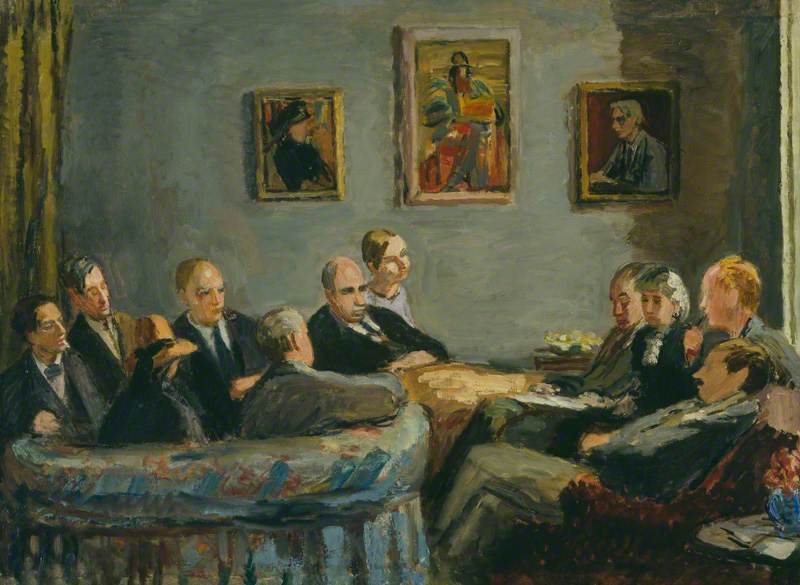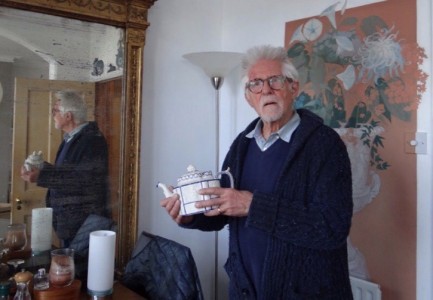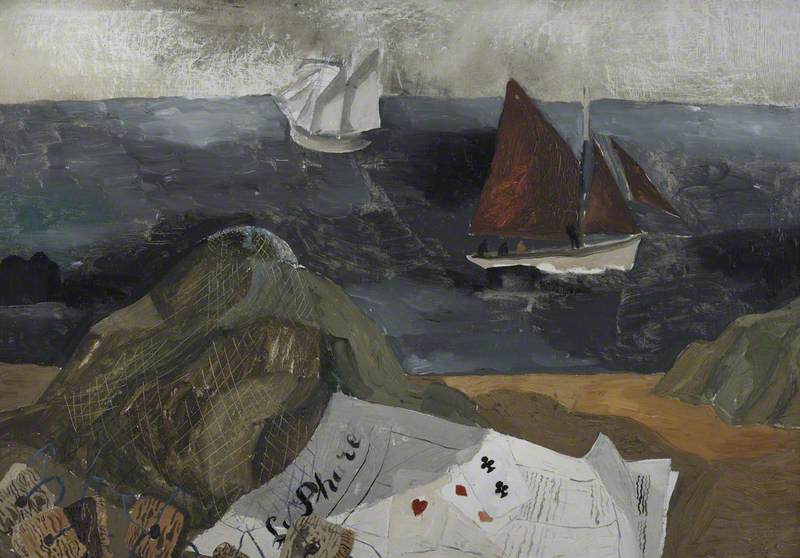Here's a small, odd truth about cinema. If the large screen contains a smaller screen – a television, say, or a computer monitor – your eye will almost invariably be drawn towards it. It's so dependable an effect that directors often use it to supply a kind of visual counterpoint for their main scene, but it's also so effective that they have to be careful the viewer doesn't become distracted and disappear down that embedded wormhole.
Something similar can happen in a painting, though it's far less potent. That might simply be because we're dealing with a still image but also possibly because painters can decide precisely how clear the picture within the picture is going to be (not to mention the fact that they retain authority of everything within the frame). But even so, a painting or an image within a painting will often pull our gaze back repeatedly. We're wired to look at what other people are looking at, even if the people doing the looking are only painted.
Take this picture by Geoffrey Tibble, for instance, The Discussion, which includes what appears to be a page from a catalogue or an art magazine in the left foreground. It is, I assume, what's being discussed, though there isn't anything in the image that would make that indisputable.
It doesn't look like a very lively discussion at all, to be frank, though it's possible that it has been caught at a moment when everyone present is thinking about something that's just been said. And the available details for the picture, which was bought for the Government Art Collection in 1995 and now hangs in the British Embassy in Washington DC, aren't exactly helpful. It was painted in 1948 but it appears to depict an Edwardian gathering, judging from the women's clothes and the oil lamp on the cupboard in the background – so we can't easily extrapolate from Tibble's own artistic biography.
What is it that the man is looking at though? My first guess was that this depicts a Bloomsburyish gathering having an exchange of views about a recent exhibition, perhaps of tribal art (the figure has something of the squat crouch of some West African sculptures or maybe of modern work inspired by them (Epstein or Gaudier-Brzeska say). But the dates won't quite align.
When I posted a detail on Twitter someone used Google Image Search, which suggested Goya's Self-Portrait in The Workshop as a possible match. That's tempting, but the Goya isn't quite callipygian enough and, in any case, Google Image Search isn't very judicious, to put it mildly. I entered a detail of the mask-faced women second from the right and was offered these images back as 'visually similar'. I don't think algorithms are going to get us very far.
It could just be a suggestive place-holder I suppose, a squiggle of paint intended to represent the concept of a picture rather than a specific one. But I can't help feeling that Tibble knew exactly what it was, and that the discussion of the title bears some relationship to it. So I'm going to add my question to the Art Detective discussions and draw on a human search engine with a lot more connoisseurship and contextual knowledge (it has successfully solved other mysteries relating to other half-forgotten paintings). In the meantime, I'll add Tibble's picture to the list of those in which a painted painting competes with the painting itself for our deepest attention.
Tom Sutcliffe, Arts Broadcaster, Radio 4
Editor's note: the Art Detective discussion yielded some fascinating discoveries, which you can read about in this story










